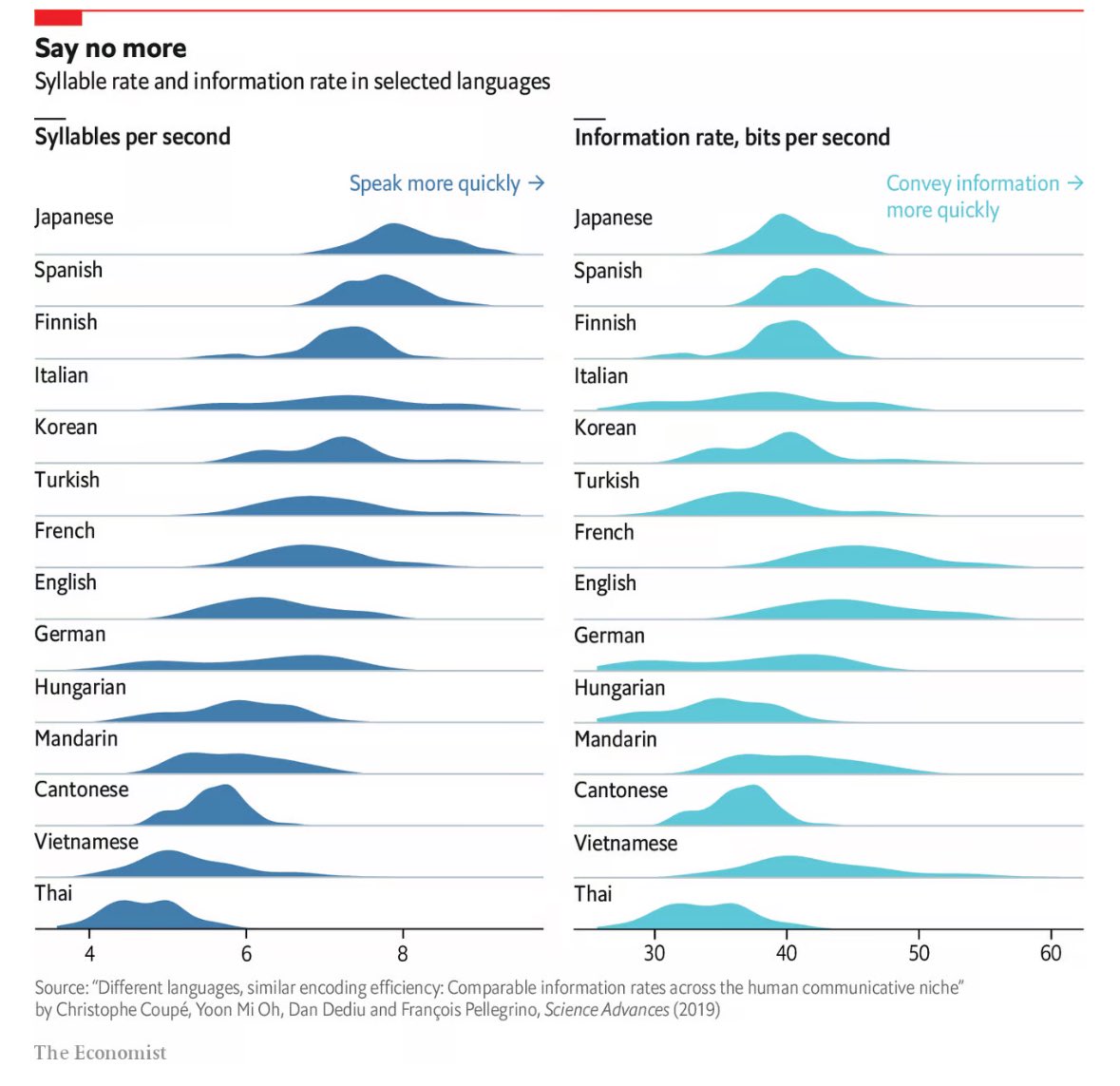Wollen sie etwa behaupten, die Informationsübermittlungsgeschwindigkeit der deutschen Sprache sei unterdurchschnittlich? So eine Unverschämtheit!
Data is Beautiful
A place to share and discuss visual representations of data: Graphs, charts, maps, etc.
DataIsBeautiful is for visualizations that effectively convey information. Aesthetics are an important part of information visualization, but pretty pictures are not the sole aim of this subreddit.
A place to share and discuss visual representations of data: Graphs, charts, maps, etc.
A post must be (or contain) a qualifying data visualization.
Directly link to the original source article of the visualization
Original source article doesn't mean the original source image. Link to the full page of the source article as a link-type submission.
If you made the visualization yourself, tag it as [OC]
[OC] posts must state the data source(s) and tool(s) used in the first top-level comment on their submission.
DO NOT claim "[OC]" for diagrams that are not yours.
All diagrams must have at least one computer generated element.
No reposts of popular posts within 1 month.
Post titles must describe the data plainly without using sensationalized headlines. Clickbait posts will be removed.
Posts involving American Politics, or contentious topics in American media, are permissible only on Thursdays (ET).
Posts involving Personal Data are permissible only on Mondays (ET).
Please read through our FAQ if you are new to posting on DataIsBeautiful. Commenting Rules
Don't be intentionally rude, ever.
Comments should be constructive and related to the visual presented. Special attention is given to root-level comments.
Short comments and low effort replies are automatically removed.
Hate Speech and dogwhistling are not tolerated and will result in an immediate ban.
Personal attacks and rabble-rousing will be removed.
Moderators reserve discretion when issuing bans for inappropriate comments. Bans are also subject to you forfeiting all of your comments in this community.
Originally r/DataisBeautiful
Thai is so efficient
Hard to tell. Need something like "bits of information per syllable" to get at efficiency. Just eyeballing it, Vietnamese, English, and Cantonese seem most likely the most efficient.
Cantonese and Vietnamese make sense, as they're are both tonal languages (along with Mandarin, Thai, Punjabi, and Cherokee apparently). English wastes tones on communicating stress or question vs statement.
English is pictured as such a smooth, almost perfectly normalized bell curve. On one hand it's such a versatile language that (largely due to colonialism) has undergone so much evolution and mixing with other languages that I can believe that. On the other hand it looks almost too normal. Odd.
Could be bias. But, I wonder if it could be because English has borrowed so much from other languages.
It’s also interesting that English and French look so similar in the graphs. Both, have been the de facto international language for a long time.
It's long been suspected that Koreans are really fast with rhythm games and have high APM because of their language getting to the point faster.
That was the issue I had with my elementary school spanish teacher. He spoke so fast that you just couldn't latch onto anything. It just sounded like DDDDDDDDDDDDDDDDS aqui. DDDDDDDDDDDDDDDDRS agostos.
Italian has a wildly different set than everyone else pretty much.
So Thai is the current meta
I am curious about Arabic. I feel like it should be having the highest information rate.
What makes you think that? I'm curious. I would've assumed something like Inuktitut (1 word conveys subject verb object tense ...) or something like toki pona (removes unused information) or maybe a highly analytical language like one of the Chinese languages.
I was comparing Arabic to other languages with the most speakers in the world. I have no idea what those languages you mentioned sound like. And I bet conlangs could be designed to fulfill such requirements as well.
Syllables can vary in length. Japanese has very short syllables while English has rather long ones. Counting phonemes would make more sense
